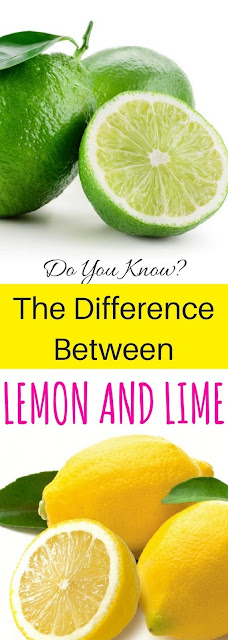Lemons and limes are two popular citrus fruits known for their tart and zesty flavors. While they may appear similar at first glance, they are distinct in taste, appearance, and culinary uses. In this article, we’ll explore the key differences between lemons and limes, helping you to better understand these citrus delights and how to use them in your favorite recipes.
1. Appearance
One of the most apparent differences between lemons and limes is their appearance. Lemons are typically larger than limes and have a bright yellow color when ripe. They have an oval or elliptical shape with a textured, slightly bumpy skin. Limes, on the other hand, are smaller and usually green when ripe. They are typically round or oval and have smoother skin compared to lemons.
2. Flavor
The most significant distinction between lemons and limes lies in their flavor profiles. Lemons are known for their strong, tangy, and slightly sweet taste. They have a higher sugar content than limes, which contributes to their milder acidity. This makes lemons a popular choice for making lemonade, desserts, and salad dressings.
Limes, on the other hand, are intensely tart and often have a more bitter taste compared to lemons. They have a zesty, citrusy flavor with a hint of bitterness, which can add a refreshing and slightly pungent kick to dishes and beverages. Limes are commonly used in Mexican, Thai, and Indian cuisines, adding depth and complexity to various dishes.
3. Culinary Uses
Due to their distinct flavors, lemons and limes are used in different culinary applications:
- Lemons: Lemons are versatile and widely used in both sweet and savory dishes. Their juice and zest are essential ingredients in many desserts, such as lemon bars, lemon meringue pie, and lemon sorbet. Lemon juice is also a popular choice for brightening up salad dressings, marinades, and seafood dishes.
- Limes: Limes are a staple in Mexican cuisine, where they are used to prepare guacamole, salsa, and margaritas. They also add a burst of flavor to Thai and Indian curries, as well as Southeast Asian dishes like pad Thai. Lime juice is a common ingredient in cocktails like mojitos and daiquiris.
4. Nutritional Differences
Both lemons and limes are packed with essential vitamins and antioxidants, making them a healthy addition to your diet. However, there are slight differences in their nutritional profiles:
- Lemons are slightly higher in vitamin C compared to limes. Vitamin C is known for its immune-boosting properties and its role in collagen production.
- Limes contain higher amounts of vitamin A and calcium compared to lemons. Vitamin A is essential for vision and skin health, while calcium is crucial for bone strength.
- Both fruits are low in calories and provide a small amount of dietary fiber, which aids in digestion.
Conclusion
While lemons and limes share some similarities, such as being citrus fruits rich in vitamins and antioxidants, their differences in flavor, appearance, and culinary uses are quite distinct. Whether you’re making a zesty lemon meringue pie or adding a tangy twist to your favorite cocktail with lime juice, understanding these differences can help you make the most of these flavorful fruits in your cooking and baking adventures. So, the next time you’re at the grocery store, you’ll know exactly which fruit to pick for that perfect burst of citrusy goodness in your dish.
